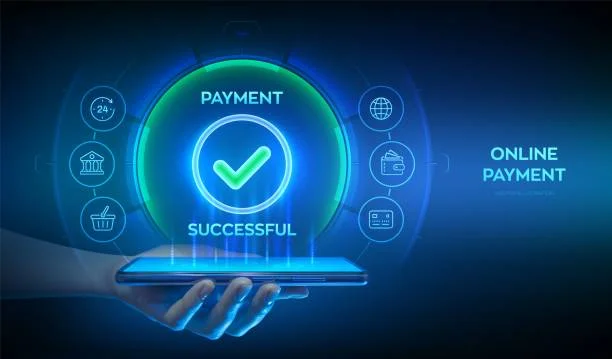In olden times, payments used to be so simple. There were just a few providers and a single gateway for it. The transactions just flowed with ease. But now times have changed. There are
- Global customers
- Multiple payment channels
- Digital wallets
- Compliance demands
Dealing with so many methods and managing payments has become a task. Payment orchestration comes in to simplify things. It helps to optimise and future-proof the ways in which enterprises will handle payments.
Read further through this guide to reduce failures, improve user experience, and scale up.
Readers also enjoyed this connected article—check it out.
Payment Orchestration
A smart protective layer that lies between your business and various payment service providers is that of payment orchestration. There are no more dependencies on manual tasks. Things like manually juggling multiple integrations are old stories. Why? Because you use a single platform to manage them all.
It automates how payments are routed, authorised, retried, and secured. From the user’s view, nothing changes. But in the background, transactions are processed in the most efficient and cost-effective way.
Here is a comparison of the traditional payments vs payments with orchestrations:
| Traditional Payment Setup | With Payment Orchestration |
| Multiple direct integrations | One unified integration |
| Manual routing logic | Smart, automated routing |
| Limited reporting per gateway | Centralised data and insights |
| Difficult to scale | Easy addition/removal of partners |
Why Enterprises Need Payment Orchestration
The demands of your business’s payment stack just increases along with its growth. You will probably then want to expand globally, offer new payment methods, or meet stricter compliance standards.
But doing this with a traditional setup can be painful and time-consuming. Payment orchestration gives you a single view and control centre. So, this makes it easier to manage complex setups.
The common enterprise needs are as follows:
- Support for multi-currency payments
- Better uptime and reliability
- Regional gateway optimisation
- Custom routing rules
Key Benefits of Payment Orchestration
Numerous advantages of payment orchestrations have proven over time. Some of the top advantages are as follows:
- Higher Success Rates: You get better numbers with orchestration. There are no failed payments which may lead to lost revenue. Orchestration platforms use smart routing to direct transactions to the best-performing gateway.
- Improved Customer Experience: Your customer would not like to see a payment fail. So, for that, quick retries and backup gateways are there to reduce friction and improve trust.
- Faster Time to Market: You can integrate a new payment method quickly without rebuilding the entire stack.
- Centralised Control: The best thing is that you can track all payments, providers, and performance in one place.
The Core Features to Look For
If you are considering payment orchestration, look out for these essential features:
- Smart Routing: Send transactions to the gateway with the highest success rate.
- Retry and Cascade Logic: Automatically retry failed transactions with fallback options.
- Tokenisation: Securely store card details without handling sensitive data.
- Fraud Detection Tools: Monitor and prevent suspicious activity.
- Real-Time Analytics: Gain visibility into payment trends and performance.
- Easy API Integration: Plug into your system without a major overhaul.
Use Cases Across Industries
With payment orchestration, you can ease transaction complexity and customer experience across different sectors. Some examples include –
- E-commerce: Reduce cart abandonment with fast and secure checkouts.
- Subscription Platforms: Ensure recurring payments do not fail and impact renewals.
- Travel and Hospitality: Handle international bookings with varied payment methods.
- SaaS Providers: Enable seamless billing across markets.
How Payment Orchestration Supports Growth and Scalability
Businesses aiming to scale often face delays because of rigid payment setups. Orchestration removes these roadblocks by making your stack more flexible and adaptive.
Growth Advantages:
- Add local gateways for new regions
- Stay compliant with local regulations
- Support new payment trends (e.g., BNPL, digital wallets)
- Swap out underperforming providers with minimal effort
You are no longer locked into one system. You are building a payment infrastructure that evolves with your goals.
Challenges Without Orchestration
Still, relying on a basic or fragmented payment system? See what you risk:
| Challenge | Impact on Business |
| High failure rates | Lost revenue and customer trust |
| Complex integrations | Slower time to market |
| Siloed reporting | Poor decision-making |
| Lack of agility | Harder to scale across geographies |
| Provider lock-in | Difficult to switch due to tight setup |
How To Implement Payment Orchestration
Ready to make the shift? Follow these steps:
- Assess Your Current System
- What pain points exist?
- Which payment failures hurt the most?
- Define Business Goals
- Are you expanding to new regions?
- Do you want better insights and success rates?
- Choose the Right Orchestration Partner
- Ensure they support your preferred gateways
- Look for features that match your needs
- Ensure Technical Readiness
- Prepare APIs, systems, and team support
- Plan for data security and compliance
- Monitor and Optimise
- Track key performance metrics
- Adjust routing rules based on real-time data
Conclusion
So, now you are already seeing that payments have become more complex. The complexity forces us to go in for more flexible and reliable solutions. There is a desperate need for smart solutions like payment orchestration.
The channel helps you stay ahead whether you are –
- Scaling globally
- Improving user experience
- Tightening security
All of it is covered! It serves you as a long-term strategy that future-proofs your payment infrastructure. You just have to put in some extra effort. You need the right setup. This way, you will get a chance to gain better control, improve your performance, and enjoy the freedom to grow without limits.
Start simplifying. Start scaling. And start thinking about payment orchestration as a core part of your digital strategy.
Don’t miss out on more great reads—click through our featured posts!







